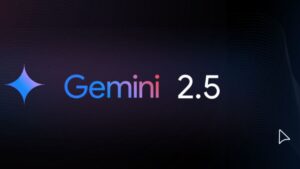DeepSeek V3 Emerges as the Top Nonreasoning AI Model

DeepSeek V3: A Breakthrough in Non-Reasoning AI Models
Introduction to DeepSeek V3
DeepSeek V3 has made headlines as the leading non-reasoning AI model currently available, surpassing well-known competitors like OpenAI’s ChatGPT, Grok, and Google’s offerings. According to an update from Artificial Analysis, an AI benchmarking organization, this model has achieved the highest score based on its intelligence index, which evaluates factors such as reasoning, knowledge, mathematics, and coding skills.
What Makes DeepSeek V3 Unique?
Open-Weights Advantage
One of the most significant aspects of DeepSeek V3 is its open-weights structure. This means that the model is entirely open-source, allowing users to access and modify its framework. Unlike OpenAI, which keeps the inner workings of ChatGPT under wraps, DeepSeek offers transparency, enabling developers and researchers to explore and fine-tune the model without limitations.
The choice between open and closed AI systems typically aligns with a company’s strategic interests. Open models invite collaboration and innovation, whereas closed models can safeguard proprietary technologies.
Performance and Speed
While DeepSeek V3 is classified as a non-reasoning AI model, it compensates for this classification by being considerably faster. This speed is a critical factor, making DeepSeek more cost-effective for various applications. This is especially relevant for businesses that prioritize efficiency and affordability in their AI solutions.
Comparison with Other Models
DeepSeek V3 stands out not just for its speed but also for its competitive nature against models like GPT-4.5 and Google Gemini 2.0. Non-reasoning models are often more suited for a broader range of practical applications, making them preferable for companies that require quick and economical solutions.
Historical Context and Updates
DeepSeek V3 was launched in December, and since then, it has placed American AI firms under pressure to elevate their game. Earlier this year, DeepSeek made headlines again by releasing its R1 reasoning model for free. This was significant as it marked the first public release of a high-level reasoning model that can perform complex tasks like verifying its own answers—a highly sought-after feature in AI.
Implications for the AI Industry
DeepSeek V3’s rise illustrates the fact that Chinese AI companies can and are competing effectively with American firms, often while maintaining a commitment to open-source principles. This situation poses challenges for U.S. companies, prompting calls for policy changes that would allow for greater flexibility in using copyrighted material for training AI systems.
Regulatory Challenges
OpenAI, among others, is urging the U.S. government to address these challenges promptly. The argument presented is that if regulations around the use of copyrighted content remain strict, American firms might fall behind in the rapidly evolving AI landscape.
Potential Applications
Given its speed and efficiency, DeepSeek V3 can be utilized across various sectors where quick responses and adaptability are crucial. Its open-source nature encourages innovation among developers looking to harness its capabilities in unique ways.
Future Outlook
As DeepSeek V3 leads the market as a non-reasoning model, it serves as a benchmark for future AI developments. Its success may push other companies to either open up their technologies or innovate more efficiently to stay competitive.






